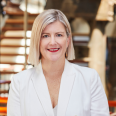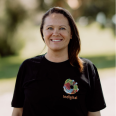Translations
We’ve summarised the report in 5 languages to make it easier for people from culturally and linguistically diverse communities to access the information.
An independent panel set out to find ways to increase diversity in science, technology, engineering and mathematics (STEM). Its recommendations highlight the need for more ambitious and strategic action.
The panel’s final report contains:
The recommendations aim to drive coordinated and impactful actions to increase diversity and inclusion of people underrepresented in STEM education and jobs. It includes actions for industry, governments, the education sector, not-for-profits and individuals.
Download the report below or scroll to access translations, read highlights or find more information.
We’ve summarised the report in 5 languages to make it easier for people from culturally and linguistically diverse communities to access the information.
We present this final report of the Pathway to Diversity in STEM Review with pride. We express deep appreciation for the generosity of everyone who shared their time, expertise and personal stories with us along the way.
We have drawn on submissions and conversations, from research, and other important work underway across Australia and overseas, to develop the recommendations in this report.
We’ve heard (and experienced) that learning about and working in STEM can be as rewarding as it is challenging.
People from diverse cohorts face additional and often intersecting barriers. This diversity can include where they live or their socioeconomic status. It can include their gender or sexual orientation, their race or culture, or their physical or cognitive ability.
As a result, they cannot pursue their aspirations and interests in STEM in the same way as peers who do not face these challenges. We also recognise the existing systemic and structural barriers that exclude or place additional burdens on people pursuing and working in STEM careers.
People underrepresented in STEM too often carry the weight of advocating for change. Drawing on these people’s lived experience is critical to knowing how to remove barriers to their participation. The work of fixing it should not only fall on their shoulders.
More importantly, these individuals should not have to change to belong and thrive in learning and work environments not designed to support them. We have heard from so many people and organisations: the system must change, not the people.
Industry and academia will benefit from a more diverse STEM workforce, so they must play a role alongside governments. This is why we have included actions targeted at non‑government organisations.
The recommendations in this report reflect the urgency of supporting and retaining diverse people in our existing STEM workforce. We cannot afford to lose anyone. We must harness the potential of all people with a curious mind, a spark for problem-solving and a keenness to build up and change our world.
We acknowledge that much needs to be done to improve the education system. We must ensure equity and diversity across the pathway from early childhood to tertiary education, and in and out of STEM jobs. We must give specific attention to improving STEM learning as part of national education and skills reforms currently underway.
We must also work to shift pervasive perceptions and stereotypes about who can, and should, work in STEM jobs.
However, these efforts will be wasted if people endure bullying, sexual harassment, racism and discrimination in their workplace.
We heard directly from people in the sector who have voiced dismay and exhaustion by continued, unchecked harmful behaviours. Many stories were shared in confidence for fear of retribution. This is unacceptable.
Organisations and government must take urgent action to eliminate behaviours that cause people to leave STEM occupations because they feel, and are, unsafe. Accountability for change is critical.
Government and non-government organisations are already doing incredible work to increase diversity in STEM. We’ve shown this through case studies in this report. These initiatives are important, but cannot, and will not, result in sustainable and meaningful change on their own. We must increase accountability and drive a long-term strategic approach to ensure cultural and systemic change. The Australian Government has a clear opportunity to coordinate and lead these efforts.
We developed the recommendations in this report collaboratively. We built them with evidence and shaped them from personal stories. We did this to drive empathy, accountability, and cultural transformation essential for ongoing advancements in STEM diversity and inclusion. The recommendations respect an important message conveyed throughout many of our conversations: 'Tell my story, but do not tell it without me'.
We look forward to a future where all people are welcome and supported to pursue their aspirations for a career in STEM.



This report contains 11 detailed recommendations, summarised below.

Photo credit: Sydney Quantum Academy

Photo credit: Engineers Australia
The panel’s Diversity in STEM Program Strategy recommends an approach to designing and delivering programs to increase diversity in STEM.
Its strategy has 3 key elements:
They set a foundation for the proposed dedicated advisory council and the department to take forward.

Photo credit: CSIRO

Photo credit: Sydney Quantum Academy
The report includes artwork and an ancient Kunwinjku story. These reflect the importance of technology and innovation, and their connection with life and culture.
The story of Mojarrki and Bered Bered describes how Kunwinjku people obtained the use of fire.
Neville Namarnyilk, born on Yayminyi Country, of the Burlardjah clan, created the artwork. The techniques he used have been passed down through generations and continue to evolve and grow.

Photo credit Bindi Isis
The panel drew on evidence to inform its recommendations, including research commissioned to inform the review.
Access research reports and further reading.
The panel listened to personal stories of hundreds of people and organisations across Australia’s STEM landscape.
Read about the review approach, input and engagement.